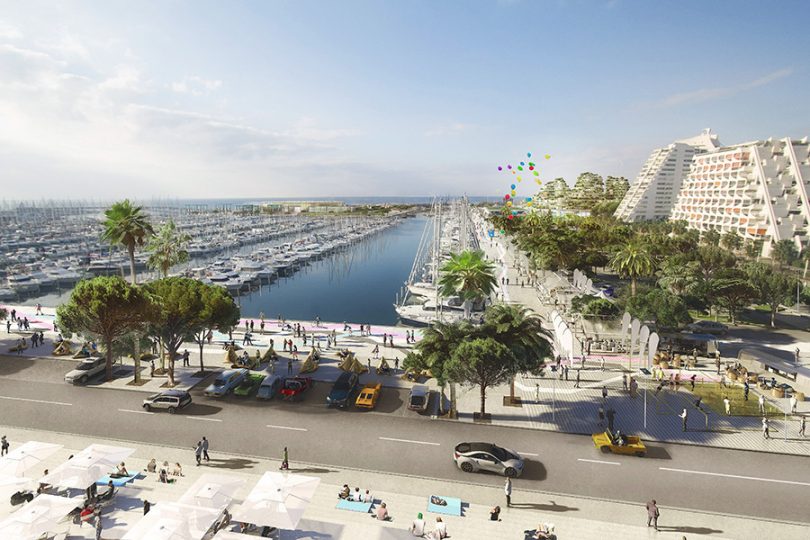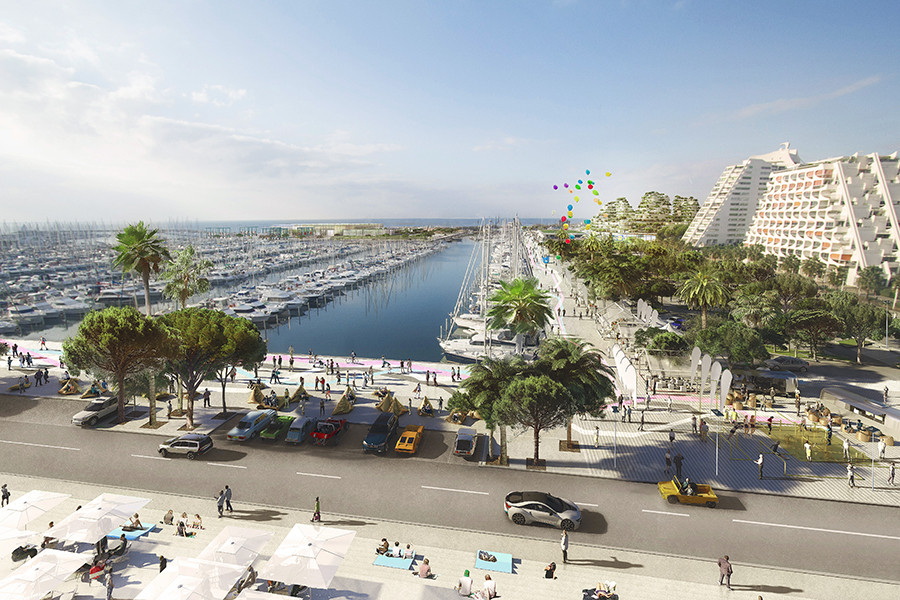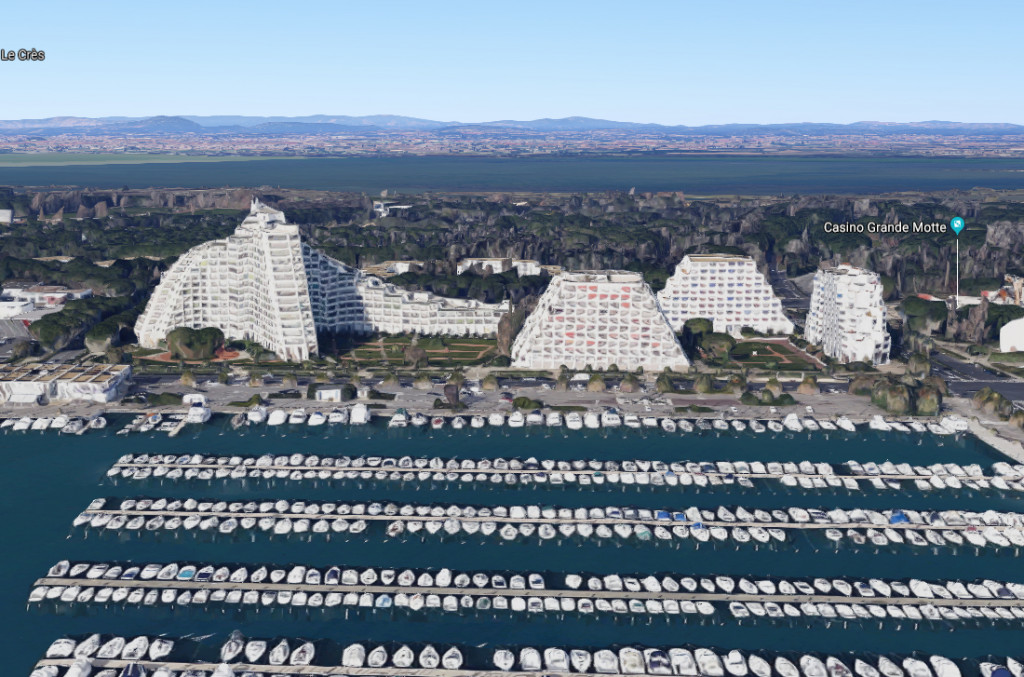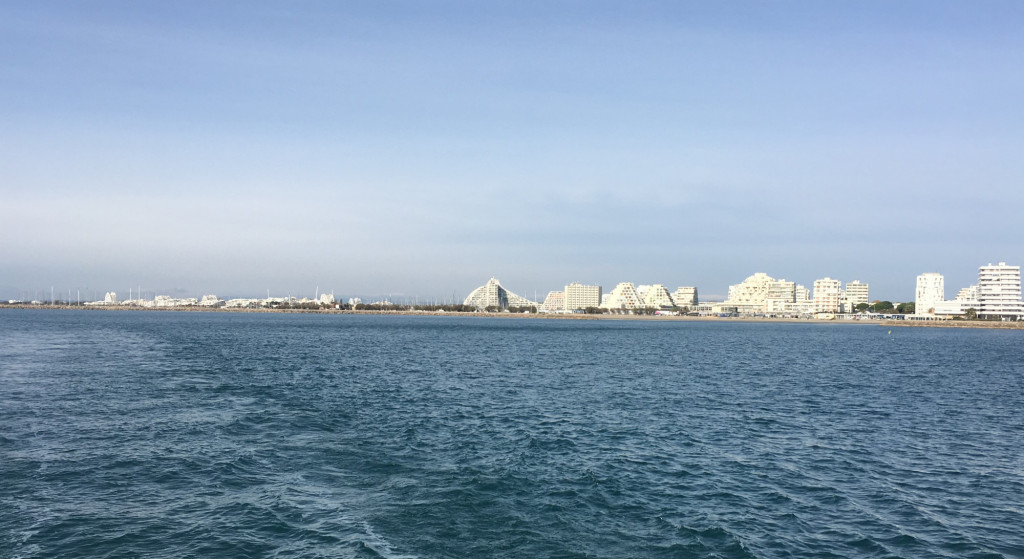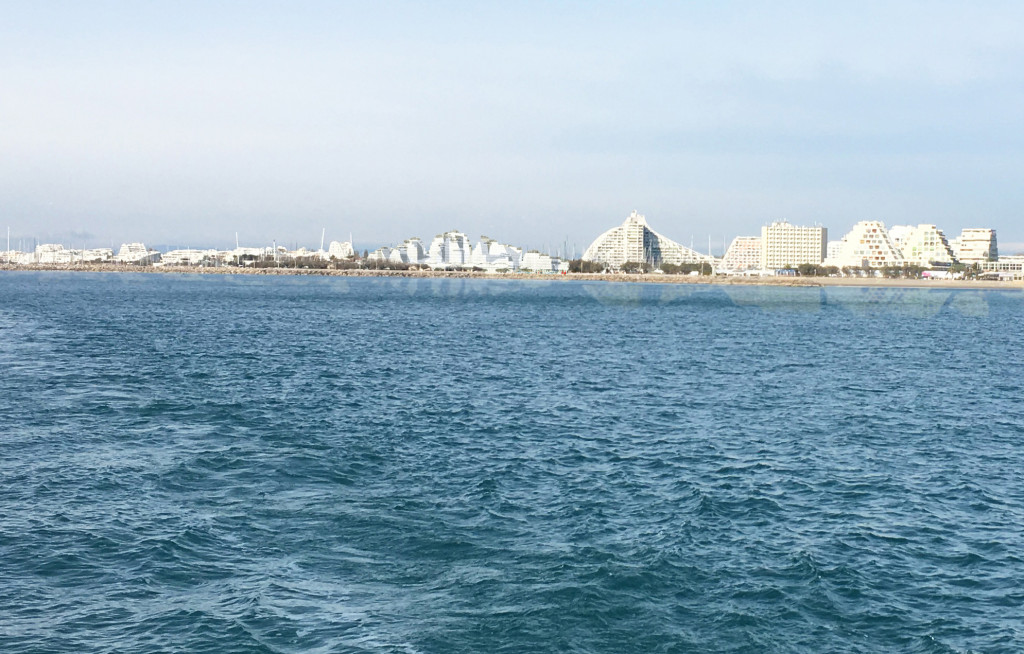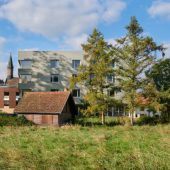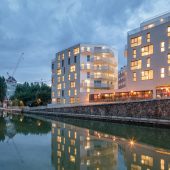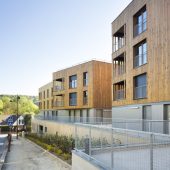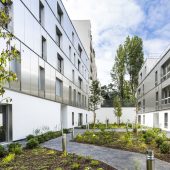La Grande Motte has long, and unfairly, been regarded as a symbol of the concretisation of the coastline, a hub of package tourism. However, the ambitions initially underpinning the project were entirely different. The “Florida of the Future” was designed as a new Eldorado for millions of holidaymakers for whom paid leave had become a veritable institution. Seventy percent of the town consisted in green spaces in which relaxing activities respecting the languid pace of the course of the sun were the order of the day. Now, the town suffers from the image of a “finished project”, with an enshrined, practically untouchable legacy marked by a tendency towards the vintage beloved of creative types. La Grande Motte is to make the transition from a summer holiday town occupied by vacationers to a town in its own right in which people would live all year round, interacting with the neighbouring territories of the Pays de l’Or and the agglomeration of Montpellier. This will result in a change of population, usages and occupations. Studios will be transformed into apartments, occupations will become sedentary, there will be a diversification of economic activities (with an emphasis on leisure and boating, a casino, and a series of trade shows), as well as an influx of students from Montpellier looking for accommodation. Jean Balladur’s heritage is characterised by a strong link between the built environment and nature. This approach has served as a guide to our project, which involves granting an important place to vegetation; encouraging strolling, flânerie and the observation of distant horizons; placing natural elements and bioclimatic issues at the very heart of the new residential units of the Grande Colline; building a new sector of residential units; and creating a new harbour basin at the foot of the residential units for a yet more intimate interface between residents and the sea. The Grand Colline is more than just a strong architectural statement. Above all, this new neighbourhood represents the successful resolution of a strategic urban problem which has, up until now, received little attention. The new neighbourhood will become a bridge between the neighbourhoods of the Levant and the Couchant; it will establish a landscape transition between the back port, composed of natural landscape elements, and the port proper, which is currently mineral in appearance. Lastly, it will offer innovative styles of living worthy of a town that was initially designed to be “futuristic”. The showcase site, which announces a gradual transformation of La Grande Motte, proposes a method more than a posture, and urban rules rather than a fixed architectural form running the risk of quickly becoming obsolete. A nod in the direction of Jean Balldur’s legacy, the Grande Colline will be a new landmark on the town skyline, combining an urban setting and buildings responding to bioclimatic issues. A large “marine diagonal” will traverse the plot from the large pine wood to the seafront. The residential units will be articulated around an area full of potential, proposing new ways of living by hybridising work and living spaces. The hill The Grand Colline is more than just a strong architectural statement. Above all, this new neighbourhood represents the successful resolution of a strategic urban problem which has, up until now, received little attention. The new neighbourhood will become a bridge between the neighbourhoods of the Levant and the Couchant; it will establish a landscape transition between the back port, composed of natural landscape elements, and the port proper, which is currently mineral in appearance. Lastly, it will offer innovative styles of living worthy of a town that was initially designed to be “futuristic”. The showcase site, which announces a gradual transformation of La Grande Motte, proposes a method more than a posture, and urban rules rather than a fixed architectural form running the risk of quickly becoming obsolete. Thanks to the layout of its public spaces, the port is able to offer a number of different time-scales, from the daily stroll or jog to the hosting of events of all kinds: boating shows, new spaces for the “Festival of Living Architecture”, and the creation of new happenings. Lastly, an exemplary approach will be taken to the project based on a dialogue between of all the actors involved: residents, associations, Architectes des Bâtiments de France, port actors (yachtsmen and women, the harbor master, people working in the technical area, etc.), and retailers. A co-creation approach will be applied to the site’s cultural, patrimonial and urban context, making it easier for local people to appropriate it. The port extension is based on a rapprochement between the water and the town. In effect, one of the new basins will be located at the foot of the residential units, thus providing them with a direct view of the marina. A new tool for the boating economy, the rationalised plan for the Baumel Peninsular hosts, under a single hangar, the same hangar the 18,000m² of local activities of the new nautical hub and its panoramic rooftop. From the Place des Voiles to the Esplanade Justin, the “Beach-to-Beach Promenade” stretches over 1.5km and features eight squares linking the centre of the town to the sea. The rehabilitation of the Quai Tabarly and the Quai Pompidou provides an opportunity to reimagine these public spaces, making them more comfortable for pedestrians, notably by planting bushes and trees in the docks, and creating more facilities, and a greater visibility of the port. The speed with which alternative means of transport are developing has encouraged us to propose ambitious but reasonable parking solutions. A nod in the direction of Jean Balldur’s legacy, the Grande Colline will be a new landmark on the town skyline, combining an urban setting and buildings responding to bioclimatic issues. A large “marine diagonal” will traverse the plot from the large pine wood to the seafront. The residential units will be articulated around an area full of potential, proposing new ways of living by hybridising work and living spaces. The rehabilitation of the Quai Tabarly and the Quai Pompidou provides an opportunity to reimagine these public spaces, making them more comfortable for pedestrians, notably by planting bushes and trees in the docks, and creating more facilities, and a greater visibility of the port. The speed with which alternative means of transport are developing has encouraged us to propose ambitious but reasonable parking solutions.
By LECLERCQ ASSOCIÉS
